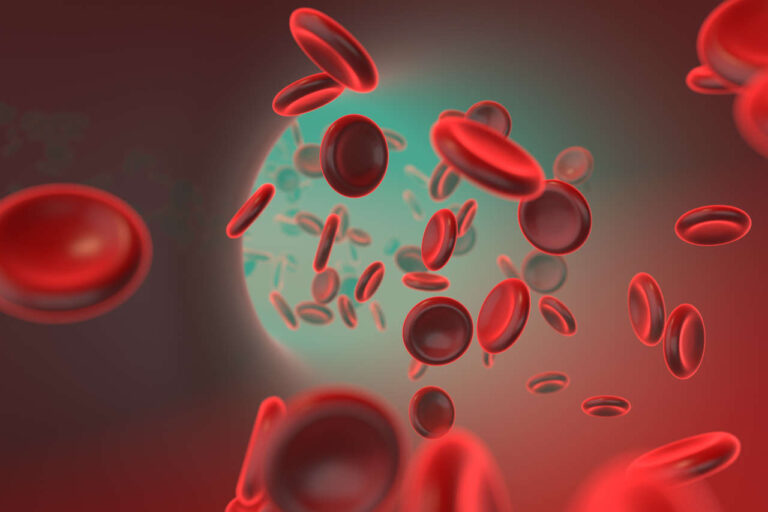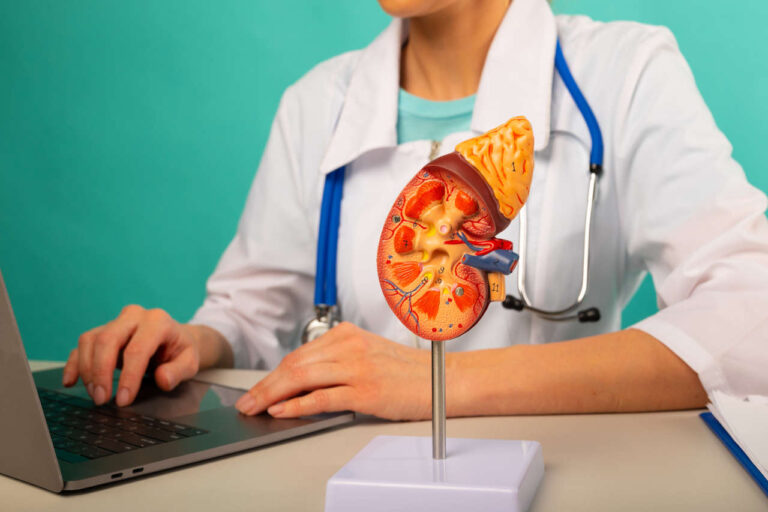
The mechanism of action of intravenous immunoglobulin, or IVIG, to treat several inflammatory problems is complex and involves multiple processes that work synergistically.
Get Your IVIG Dose
At-Home InfusionThis increasingly popular therapy is nothing less than a miracle for a myriad of inflammatory and autoimmune medical conditions. But how it exactly works in the body is still a mystery for the most part. In this article, you will learn about the potential mechanisms for how IVIG works.
A Quick Overview of IVIG
IVIG contains antibodies obtained from healthy donors. Antibodies are proteins of the immune system that recognize and attack foreign material in your body. IVIG is used to treat many different inflammatory and autoimmune disorders, such as:
- Guillain-Barre syndrome (GBS)
- Multifocal motor neuropathy (MMN)
- Chronic inflammatory demyelinating polyneuropathy (CIDP)
- Toxic epidermal necrolysis
- Hematological cancers
- Primary/secondary immunoglobulin deficiencies
- Systemic lupus erythematosus (SLE)
General IVIG Mechanism of Action
The exact IVIG mechanism of action is unclear. However, it is thought to work by the following mechanisms [1]:
Substitution
IVIG strengthens your immune system by providing antibodies that can fight off infectious material from bacteria and viruses.
In addition, it also activates your body’s second line of defense—adaptive immunity. The adaptive immune response is pathogen-specific and long-lasting. For example, adaptive immunity provides life-long protection against measles to a person who recovers from measles.
Immunomodulation
Immunomodulation by IVIG involves numerous complex and intertwined processes, such as:
- Neutralization of autoantibodies
- Decrease in pro-inflammatory effects of specialized white blood cells (WBC)
- Expansion of T cells that suppress the immune response
- Neutralization of proteins that signal the movement of WBCs
- Suppression of programmed cell death
Mechanism of Action in Autoimmune and Inflammatory Diseases
Autoimmune disorders occur when your immune system produces autoantibodies, which are antibodies that attack healthy tissues. Examples of autoimmune diseases include Guillain-Barre syndrome, chronic inflammatory demyelinating polyneuropathy, multiple sclerosis, and others. IVIG helps treat autoimmune disease by neutralizing the autoantibodies, which helps control associated signs and symptoms.
Inflammatory disorders happen when your immune system attacks healthy tissues, causing inflammation. Examples include inflammatory bowel disease, systemic lupus erythematosus, and gout. IVIG helps improve symptoms of inflammatory diseases by decreasing inflammation and activating anti-inflammatory chemicals.
Speak to a Specialist About
Copay AssistanceIVIG Mechanism of Action in Neurological Disorders
Neurological disorders affect your brain, spinal cord, peripheral nerves, nerve roots, neuromuscular junction, and muscles.
IVIG is FDA-approved to treat:
- Guillain-Barre syndrome
- Multifocal motor neuropathy
- Chronic inflammatory demyelinating polyneuropathy
- Dermatomyositis
Though IVIG doesn’t help with all neurological disorders, there’s clinical evidence to support using IVIG to treat the following:
- Myasthenia gravis
- Autoimmune epilepsy
- Neuromyelitis
- Autoimmune encephalitis
Antibodies, specialized immune cells, or infection-fighting proteins mediate almost all neurological disorders that respond to IVIG therapy [2]. IVIG targets one or more of these mediators to help improve symptoms. Moreover, IVIG suppresses autoantibody-producing cells and B cells.
Mechanism of Action in Skin Diseases
High-dose IVIG may be used to treat skin diseases that don’t respond to conventional treatments [3]. Examples include:
- Chronic hives
- Eczema
- Toxic epidermal necrolysis
- Herpes gestationis (intensely itchy rashes during the second or third trimester)
- Dermatomyositis

The exact mechanism of action is unclear. However, researchers believe IVIG works by suppressing B and T cells, blocking the death of skin cells, and decreasing inflammation [4].
IVIG Mechanism of Action in Infectious Diseases
IVIG may be used with antimicrobials to treat several bacterial and viral infections, such as [5]:
- Childhood HIV
- Bacterial infections of the digestive tract
- Cytomegalovirus (CMV) infection
- Chickenpox
- Genital herpes
- Parvovirus infection
- Clostridium difficile
IVIG is thought to neutralize bacterial toxins and enhance phagocytosis (ingesting and eliminating bacterial cells). Likewise, IVIG neutralizes viruses and activates immune cells that remove virus-infected cells from the body [6].
Get IVIG Copay Assistance
Speak to a SpecialistIVIG Mechanism of Action in Hematology
IVIG may be used to treat blood problems, like immune thrombocytopenia (a condition of low platelet levels, which leads to easy bruising and bleeding) [7].
However, its mechanism is unclear and needs further research.
REFERENCES:
- Chaigne, Benjamin, and Luc Mouthon. “Mechanisms of Action of Intravenous Immunoglobulin.” Transfusion and Apheresis Science, vol. 56, no. 1, Feb. 2017, pp. 45–49. https://doi.org/10.1016/j.transci.2016.12.017.
- Dalakas, Marinos C. “Update on Intravenous Immunoglobulin in Neurology: Modulating Neuro-autoimmunity, Evolving Factors on Efficacy and Dosing and Challenges on Stopping Chronic IVIg Therapy.” Neurotherapeutics : the journal of the American Society for Experimental NeuroTherapeutics vol. 18,4 (2021): 2397-2418. doi:10.1007/s13311-021-01108-4
- Dhar, Sandipan. “Intravenous immunoglobulin in dermatology.” Indian journal of dermatology vol. 54,1 (2009): 77-9. doi:10.4103/0019-5154.48996
- Dourmishev, Lyubomir A et al. “Intravenous Immunoglobulins: Mode of Action and Indications in Autoimmune and Inflammatory Dermatoses.” International journal of inflammation vol. 2016 (2016): 3523057. doi:10.1155/2016/3523057
- Bayry, Jagadeesh et al. “Intravenous immunoglobulin for infectious diseases: back to the pre-antibiotic and passive prophylaxis era?.” Trends in pharmacological sciences vol. 25,6 (2004): 306-10. doi:10.1016/j.tips.2004.04.002
- Pedraza-Sánchez S, Cruz-González A, Palmeros-Rojas O, Gálvez-Romero JL, Bellanti JA and Torres M (2023) Polyvalent human immunoglobulin for infectious diseases: Potential to circumvent antimicrobial resistance. Front. Immunol. 13:987231. doi: 10.3389/fimmu.2022.987231
- Almizraq RJ, Branch DR. Efficacy and mechanism of intravenous immunoglobulin treatment for immune thrombocytopenia in adults. Ann Blood 2021;6:2. doi: 10.21037/aob-20-87.













